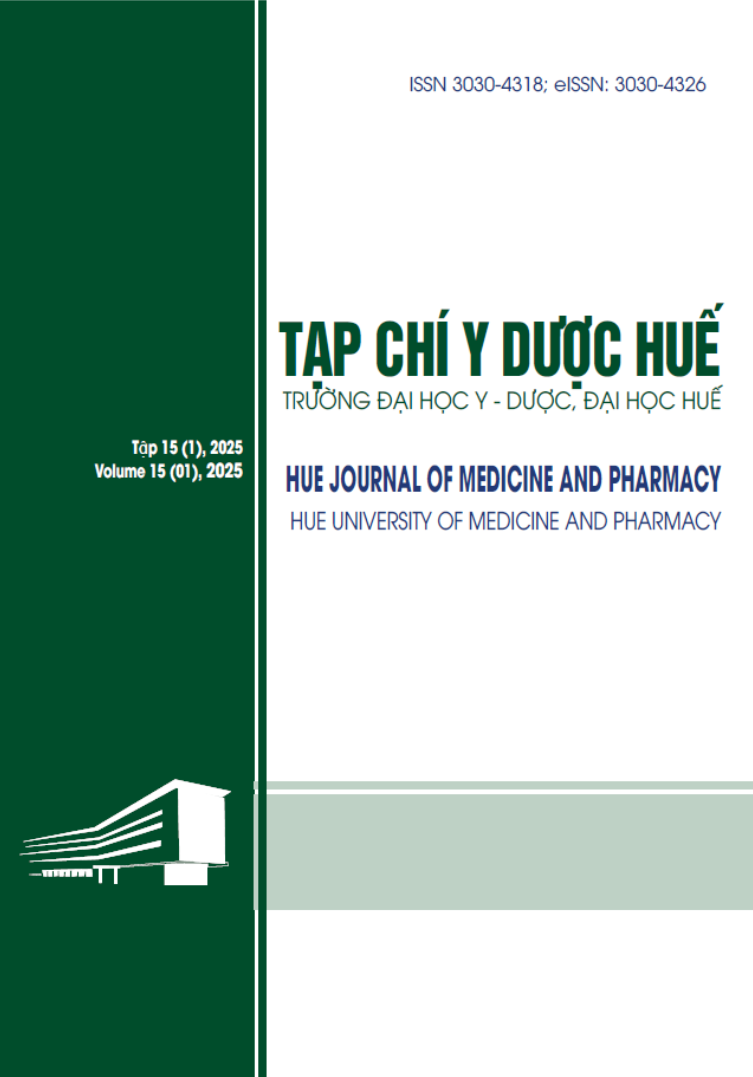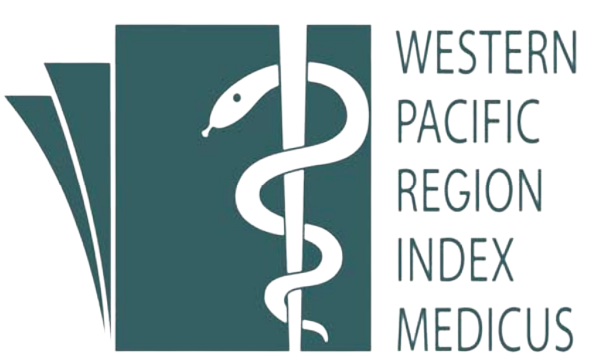Abstract
Background: Allergic rhinitis (AR) is one of the most common inflammatory diseases, leading to health and economic burdens. Genetic and environmental factors may influence the development of AR in early life.
Materials and methods: A cross-sectional study was conducted with 320 pediatric patients from the Department of Otorhinolaryngology - Ophthalmology - Maxillofacial Surgery, the Department of Pediatrics at Hue University of Medicine and Pharmacy Hospital, and the Pediatric Center of Hue Central Hospital between April 2022 and December 2023. Data on allergies, clinical history, family background, and environmental factors were collected through a parent-reported survey based on the International Study of Asthma and Allergies in Childhood (ISAAC) questionnaire. Logistic regression analysis was used to estimate the odds ratios (OR) for potential factors contributing to AR.
Results: The proportion of children with current AR was 29% in the 6-7-year-old group, 26.2% in the 13-14-year-old group, and 28.1% across all groups. Parental allergy (adjusted OR 2.44, 95% confidence interval [CI] 1.28-4.66), maternal age (1.85, 1.05-3.26), and history of eczema (1.95, 1.06-3.59) were independently associated with increased risks of AR. In stratified analyses, there was evidence that prolonged breastfeeding ≥12 months and dog exposure decreased the risk of AR in the 6-7-year-old group.
Conclusions: Certain environmental and genetic factors were associated with AR in children aged 6-7 and 13-14 within a small contemporary pediatric outpatient cohort. However, a large-scale study is needed to validate these findings.
| Published | 2025-05-09 | |
| Fulltext |
|
|
| Language |
|
|
| Issue | Vol. 15 No. 2 (2025) | |
| Section | Original Articles | |
| DOI | 10.34071/jmp.2025.2.21 | |
| Keywords | Allergic rhinitis, early childhood, lifestyle, environment factors, hygiene hypothesis, microbial dispersal |

This work is licensed under a Creative Commons Attribution-NonCommercial-NoDerivatives 4.0 International License.
Copyright (c) 2025 Hue Journal of Medicine and Pharmacy
Bousquet J, Khaltaev N, Cruz AA, et al. Allergic Rhinitis and its Impact on Asthma (ARIA) 2008 update (in collaboration with the World Health Organization, GA(2)LEN and AllerGen). Allergy. 2008;63 Suppl 86:8-160
Brożek JL, Bousquet J, Agache I, et al. Allergic Rhinitis and its Impact on Asthma (ARIA) guidelines-2016 revision. J Allergy Clin Immunol. 2017;140(4):950-958
Nga NN, Chai SK, Bihn TT, et al. ISAAC-based asthma and atopic symptoms among Ha Noi school children. Pediatr Allergy Immunol. 2003;14(4):272-279
Stewart CJ, Ajami NJ, O’Brien JL, et al. Temporal development of the gut microbiome in early childhood from the TEDDY study. Nature. 2018;562(7728):583-588
Wang DY. Risk factors of allergic rhinitis: genetic or environmental?. Ther Clin Risk Manag. 2005;1(2):115-123
Ramsey AC, Deane PM. Early-life risk factors and allergic rhinitis: comparing European and US data. J Allergy Clin Immunol. 2011;128(4):824-825
Chinratanapisit S, Suratannon N, Pacharn P, Sritipsukho P, Vichyanond P. Prevalence and risk factors of allergic rhinitis in children in Bangkok area. Asian Pac J Allergy Immunol. 2019;37(4):232-239
von Kobyletzki LB, Bornehag CG, Hasselgren M, Larsson M, Lindström CB, Svensson Å. Eczema in early childhood is strongly associated with the development of asthma and rhinitis in a prospective cohort. BMC Dermatol. 2012;12:11
Hoang MP, Samuthpongtorn J, Seresirikachorn K, Snidvongs K. Prolonged breastfeeding and protective effects against the development of allergic rhinitis: a systematic review and meta-analysis. Rhinology. 2022;60(2):82-91
Han DH, Shin JM, An S, et al. Long-term Breastfeeding in the Prevention of Allergic Rhinitis: Allergic Rhinitis Cohort Study for Kids (ARCO-Kids Study). Clin Exp Otorhinolaryngol. 2019;12(3):301-307
Verhasselt V, Milcent V, Cazareth J, et al. Breast milk-mediated transfer of an antigen induces tolerance and protection from allergic asthma. Nat Med. 2008;14(2):170-175
Ni J, Friedman H, Boyd BC, et al. Early antibiotic exposure and development of asthma and allergic rhinitis in childhood. BMC Pediatr. 2019;19(1):225
Wise SK, Damask C, Roland LT, et al. International consensus statement on allergy and rhinology: Allergic rhinitis - 2023. Int Forum Allergy Rhinol. 2023;13(4):293-859
Pénard-Morand C, Raherison C, Kopferschmitt C, et al. Prevalence of food allergy and its relationship to asthma and allergic rhinitis in schoolchildren. Allergy. 2005;60(9):1165-1171
Lu HY, Chiu CW, Kao PH, et al. Association between maternal age at delivery and allergic rhinitis in schoolchildren: A population-based study. World Allergy Organ J. 2020;13(6):100127
van Gool CJ, Thijs C, Dagnelie PC, et al. Determinants of neonatal IgE level: parity, maternal age, birth season and perinatal essential fatty acid status in infants of atopic mothers. Allergy. 2004;59(9):961-968






